In this article, you’ll get to know the main Hindu Gods and Goddesses. Moreover, you’ll learn their stories and how to energetically work with them for having a better life.
Under this paragraph, you’ll find a masterclass about Hindu Mythology. It features all the content of this article. Feel free to watch it and also read the article for more details. If you enjoy it, consider subscribing to my YouTube channel!
Introduction: Getting to know Hindu Mythology and Hindu Gods and Goddesses
Hindu Mythology, also known as Indian Mythology, is a bit different from the other ones like Greek Mythology or Celtic Mythology. The Hindu Gods and Goddesses have many complex stories.
Do you know why?
It’s because the Hindu Deities are called Deva (Gods) and Devi (Goddesses).
But not only that, of course!
In this mythology, we don’t simply find Gods and Goddesses that represent or embody something.
Indeed, we have what we can call “Goddess of Fortune”, “God of Wisdom” and so on.
However, there’s something very different and unique in the Hindu Myths: most of the deities are avatars of one or two bigger primordial deities.
For example, most of the Indian Goddesses (Devi) are manifestations of Shakti, the primordial and absolute feminine energy.
And there’s more!
It’s common to find a Goddess who is, in fact, the manifestation of ANOTHER Goddess!
It may seem complex, but in the end, it’s not.
This same “rule” is applied to the Gods (Deva).
Talking about this, another common thing in Hinduism is to find Trinities of Deities who share great powers.
Trimurti, for instance, is a trinity made by 3 Hindu Gods:
On the other hand, Tridevi is a trinity made by 3 Hindu Goddesses:
Hindu Holy Books: Hindu Gods and Goddesses Mythology and Indian Spirituality
The Hindu Holy books are ancient and sacred books. They are filled with stories about the Hindu Gods and Goddesses. Hindu Mythology, as well as Indian Spirituality, is described in them.
The biggest Hindu holy books are known as The Vedas.
The Vedas are divided into 4 big books:
- Rigveda;
- Samaveda;
- Yajurveda;
- Atharvaveda.
Besides the Vedas, there are other very important Hindu holy books too.
Among these books, it’s important to name:
- The Puranas;
- The Upanishads;
- The Ramayana;
- The Mahabharata.
My personal favorite is “Classical Hindu Mythology” which brings The Puranas in a single volume. If you are really into more details on the stories of the Hindu Gods, you must read it.
The Puranas tell the stories of the Deities in many different texts and episodes. There are lots of epic tales, battles, and achievements.
They are fundamental books to understand the Hindu Gods.
The Puranas themselves are divided into 3 main parts, which are:
- Vishnu Puranas;
- Brahma Puranas;
- Shiva Puranas.
In these parts, we find many tales not only about these 3 Deva (Gods) but also about many different Devi (Goddesses).
The Upanishads is a totally different book. It’s focused on magical principles and rituals. There are many different editions, feel free to choose the one that interests you more.
The Ramayana and The Mahabharata both depict epic battles.
The Ramayana tells the epic story of Rama, an avatar of Vishnu, and the Mahabharata tells the story of Krishna, another avatar of Vishnu.
The most fascinating editions of these books are from DK Publishing. I own the Illustrated Mahabharata myself and soon I intend to purchase The Illustrated Ramayana too.
Here are some pictures I took from The Illustrated Mahabharata:
— GALLERY
So if you wish to go deeper into the stories of the Hindu Gods and Goddesses, I highly suggest you to read these books. They are complex but worth reading.
Art and Spirituality of Hindu Gods and Goddesses
It’s interesting to notice that art and spirituality walk side by side in Hinduism. Even if you don’t practice the Hindu religion itself, you can learn and improve yourself with Hindu or Indian spirituality. And you can also energetically connect with the Hindu Gods and Goddesses.
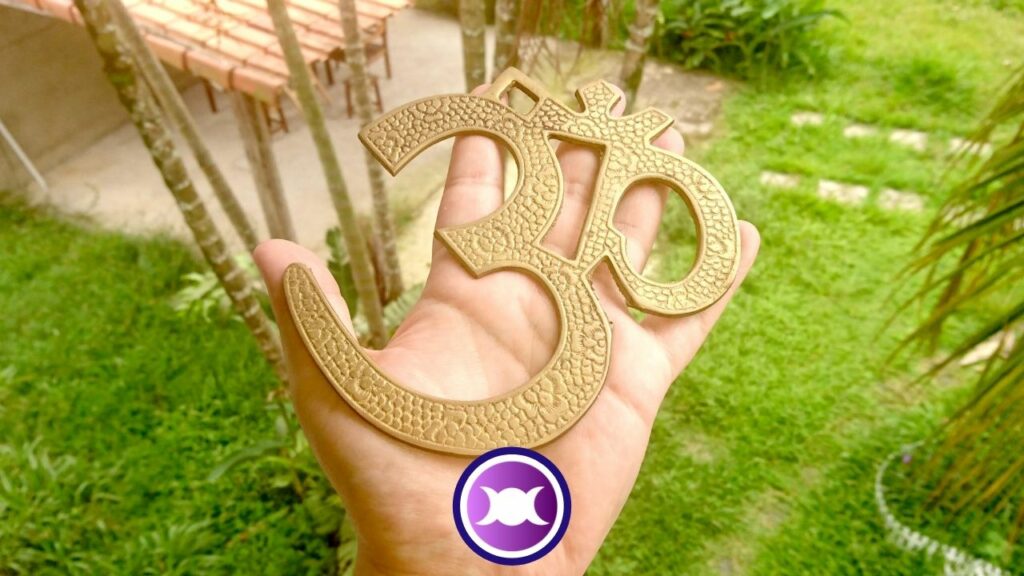
Most of the images you see here on this page, on other pages of my website, and on my YouTube videos regarding the Hindu Deities were made by my incredibly talented friend Abhishek Singh.
His arts are amazing and it’s always worth taking a look at them on his Instagram | Twitter | Facebook.
In 2019 he released a book called “Namaha – Stories From The Land Of Gods And Goddesses”.
I’ll leave some pictures below of his book and what’s inside. The book takes you on a journey that mixes art, spirituality, and inspiration.
Indian Mantras – Connecting with the Hindu Gods and GOddesses
All Hindu Gods and Goddesses have Indian Mantras dedicated to them. This is another unique trait present in this pantheon of Deities.
But, what are Indian Mantras?
Mantras are short phrases or sequences of words that connect our mind to something superior and greater, like a Deity. All you have to do is concentrate and repeat the word sequence.
MA is related to the mind and TRA is transcendence. Therefore, MANTRA is the way in which the mind is able to transcend to another level.
Mantras can be intoned or chanted. Do it the way you feel more comfortable.

Normally, you’re going to intone the mantra 108 times. This can be done by using an instrument called Japamala, also known as Japa Mala or simply as Mala. The Japamala contains 108 beads that work as a journey in this transcendence period.
Virtually all Hindu Gods and Goddesses have one or more mantras attributed to them.
Below, you’ll find all the Indian Deities I’ll write about. Alongside them, you’ll find their mantra and its purpose.
The Main Hindu Gods
Now I’ll write about the main Hindu Gods, as well as a bit of their story, their powers, and their mantra.
But why am I writing “only” about the main ones? Why not all of them?
Because there are hundreds – if not thousands – of different Hindu Gods and Goddesses! It’s virtually impossible to write about, or even know, all of them.
That’s why I’ll introduce you to the main ones here.
These Hindu Gods are frequently mentioned in the sacred texts and they all have important features and achievements.
They usually represent a skill or a special power.
Here they are:
Brahma – The Creator
The Hindu God who created the real and material world is Brahma.
Brahma created the universe, according to the Hindus.
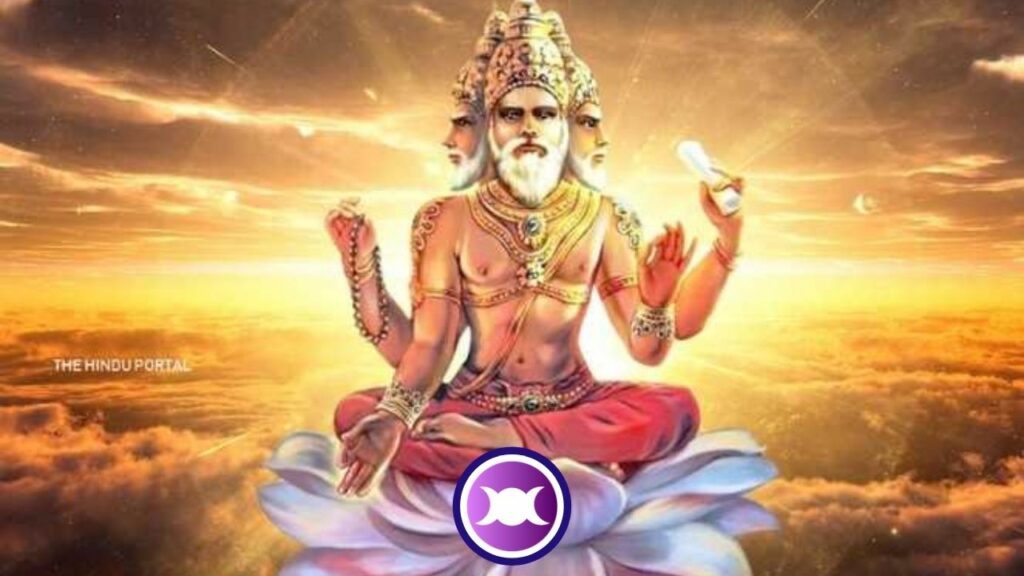
And does he have 3 heads?
Yes and no. He is usually depicted as a 3-headed mature man with a white beard and each of his heads faces a different direction.
This depiction symbolizes his ability to look into the past, the present, and the future of everything.
However, there’s a fourth face. In some depictions, we also see him as a 4-headed man. So we can assume the fourth head is always there, looking back. He can also look at what is occult, inaccessible to all of them.
This is a similar motif we find in the Triple Goddess in modern Paganism. She has 3 faces plus the occult face.
Brahma created everything we know and everything we can see.
However, during his first creations, we find the Gayatri Mantra – the most powerful mantra of all – and the Goddess of Knowledge and Arts, Saraswati.
He thought she was so beautiful that he decided to marry her.
It’s also common to see both Saraswati and Gayatri as the same manifestation of this energy.
Below you’ll find a mantra to connect with Brahma to obtain intelligence and overall knowledge:
Vishnu – The preserver
One of the most powerful Hindu Gods is Vishnu.
He is the preserver of all Brahma’s creation.
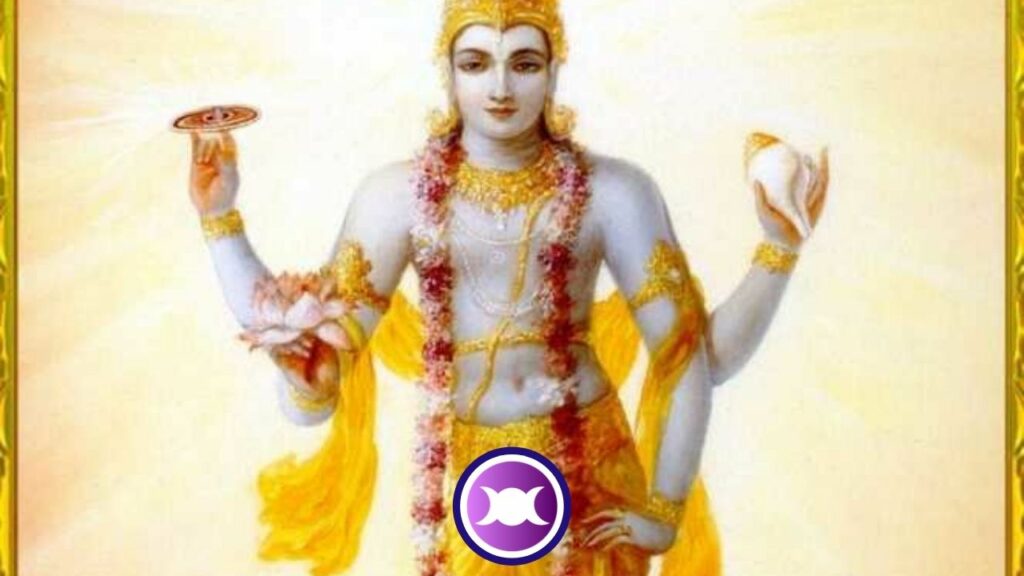
Vishnu is usually depicted as a blue-skinned man. It’s normal to find him carrying a staff in one hand and a lotus flower in another. Other common depictions show him with 4 arms holding his weapon, the Sudarshana Chakra (a disk with 108 edges), and also a shell.
Another common feature in his depictions is the presence of Najas behind him.
Vishnu’s wife is Lakshmi, the Goddess of Beauty and Fortune.
In the Puranas, we can find a whole chapter dedicated to the love of Vishnu and Sri (another name for Lakshmi).
Below you’ll find a mantra to connect with Vishnu to obtain fortune and good luck:
Vishnu also has different names, for example:
- Hari;
- Govinda;
- Jagannatha;
- Narayana.
And many more!
Besides this, Lord Vishnu has 10 avatars. These avatars are like reincarnations of him in different times and periods.
The 10 Avatars of Vishnu are:
- Matsya (The Fish);
- Kurma (The Tortoise);
- Varaha (The Boar);
- Narasimha (The Lion Man)
- Vamana (The Dwarf);
- Parashurama (The Warrior);
- Rama (The Archer);
- Krishna (The Yogi);
- Buddha (The Master);
- Kalki (The Horse Rider).
If you wish to learn more about each specific avatar of Vishnu, I recommend this reading.
It’s important to know that among these 10 avatars, 3 of them are highly mentioned and depicted. And these 3 are:
Rama – The Archer
There are many stories about Rama. When Vishnu reincarnated as Rama, Lakshmi also reincarnated as Sita and they continued being a couple.
The book which contains all about Rama is the Ramayana mentioned above.
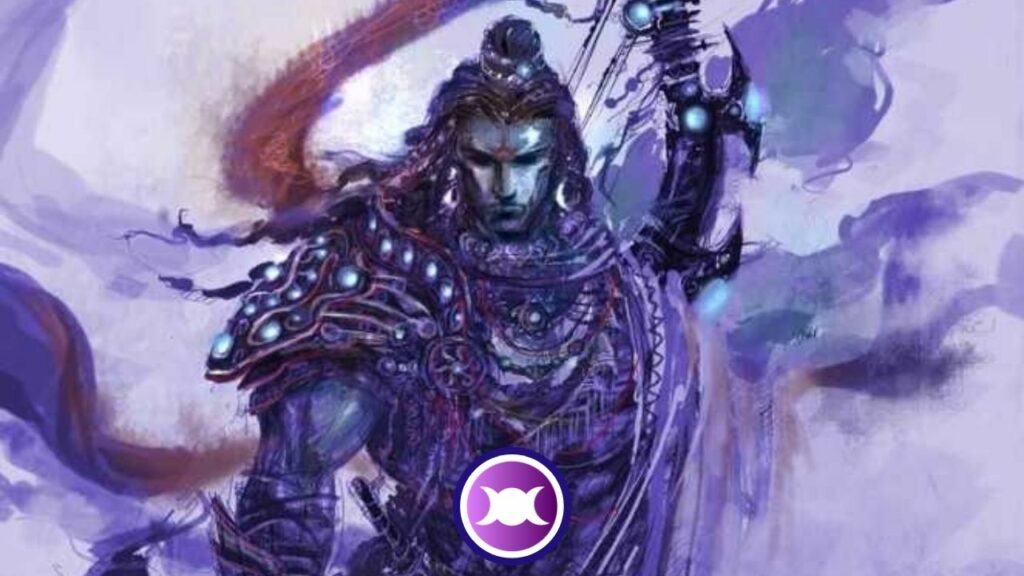
You can purchase an edition of Ramayana below. I suggest The Illustrated Ramayana by DK Publishing:
And below you’ll find a mantra dedicated to Rama. Chant this mantra to end your problems:
Krishna – the Yogi
Krishna is considered to be the perfect avatar of Vishnu.
He is always depicted with a flute and having Rukmini, a reincarnation of Lakshmi, by his side.
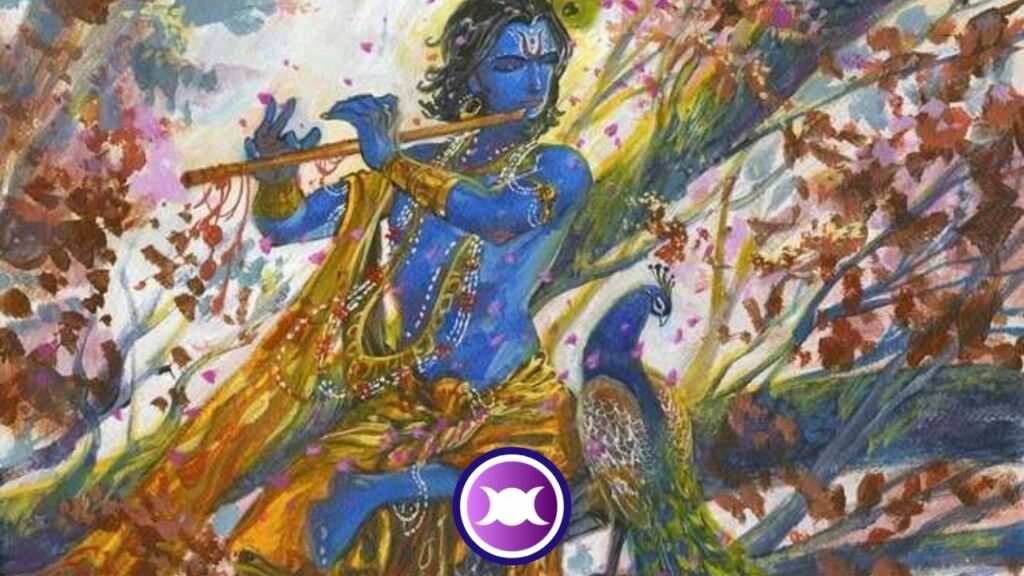
His mission was to restore order in the world and the war he fought is known as The Mahabharata.
As I also mentioned above, I own The Illustrated Mahabharata by DK Publishing and I highly recommend it!
Below you’ll find a mantra dedicated to Krishna. You can chant it to obtain inner peace:
Buddha – The Master
The Great Master Buddha that taught a new philosophy in India and helps, until today, people to achieve the illumination is the 9th Avatar of Vishnu.
it’s important to know that Buddha, as an Avatar of Vishnu, may refer to Adi Buddha, not Siddhartha Gautam.
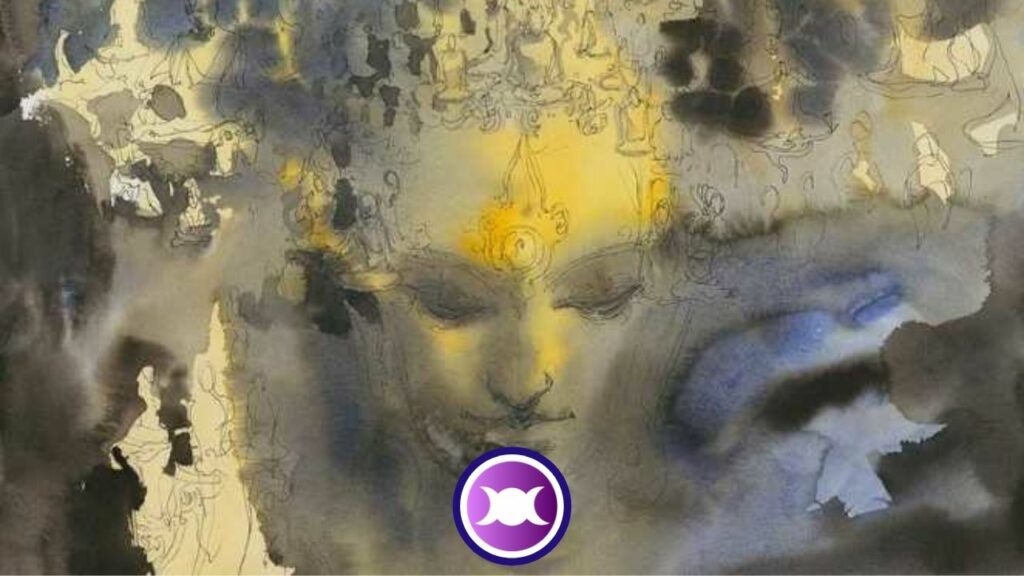
Anyway, Buddhism was born in India and then spread throughout other countries and got different branches.
Because of these branches and the local traditions that were mixed with Buddhism, we find many Buddhist Deities who share a lot of similarities with Hindu Gods and Goddesses.
More specifically, I’m talking about Goddess Tara in Tibet and Vajrayana Buddhism and Goddess Kuan Yin in China, and Mahayana Buddhism.
Both Tara and Kuan Yin are manifestations that originated in Avalokiteshvara, which is a Buddhist deity also associated with Hinduism.
Although Buddhism changed a lot, its essence continues the same.
Shiva – The Destroyer
Lord Shiva represents the destructive energy of the universe.
Besides this, he also represents the energy of balance.
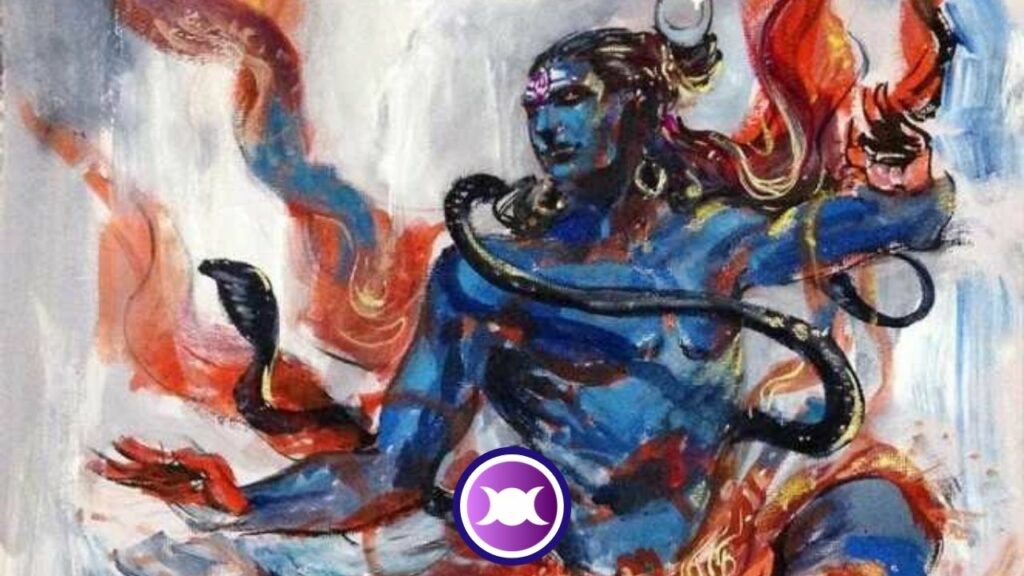
Shiva is the one who destroys all the creation. He ends everything so there’s room for a new creation. He is usually depicted as a blue-skinned man and there’s normally a tiara with a waning moon on his forehead. He also carries a trident.
He is a great warrior.
An important thing that must be clear here is that Shiva, alongside his female counterpart Shakti, is usually considered the primordial energy of everything. Some branches of Hinduism consider them as the origin.
We also have the recent discoveries in the lost city of Mohenjodharo (Mohenjo Daro). These discoveries point that all the spirituality we have around the world today may have originated there. For the Indu people of this place, there was one androgynous half man and half woman, representing Shiva and Shakti.
There’s a book that discusses these aspects as the origins of modern Witchcraft practice. The book is called “Origins of Modern Witchcraft” by Ann Moura.
Below you can listen to a mantra of Shiva to aid your meditation:
Indra – the King of Hindu Gods
In the Vedas, mainly in the Rigveda book, Indra is mentioned as the king of Hindu Gods.
He is also known as the God of Skies, Thunder, and Storms.
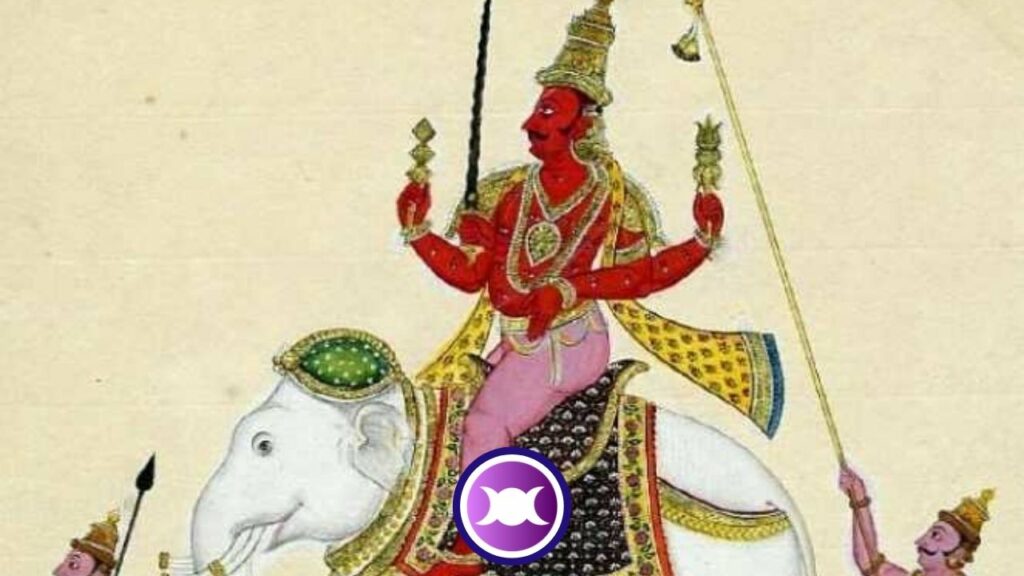
It was Indra who fought and won a battle against a powerful Asura that was preventing development, fertility, and prosperity on Earth.
Indra is usually depicted as a red-skinned man mounted on a white elephant.
Now, we have a question: if Indra is the king of the Gods, why do the Trimurti (Brahma, Vishnu, and Shiva) are more important?
Indra is extremely important and relevant in the Vedic texts. And the Vedic texts precede the other books. When the Hindu itself is established, we find the Trimurti with more relevance.
But one doesn’t exclude the other.
Remember I explained at the beginning of this post that the Hindu Gods and Hindu Goddesses are usually avatars or manifestations of other deities?
So, Indra is sometimes considered a manifestation of Shiva and sometimes a manifestation of Vishnu too.
In the end, they are all connected and they are all aspects of a bigger source of energy.
Below you’ll find a mantra for Indra to get strength and prosperity:
Hanuman – The God of Power
Hanuman is popularly known as the Monkey God and he is one of the main Hindu Gods.
yes, he has the face of a monkey.
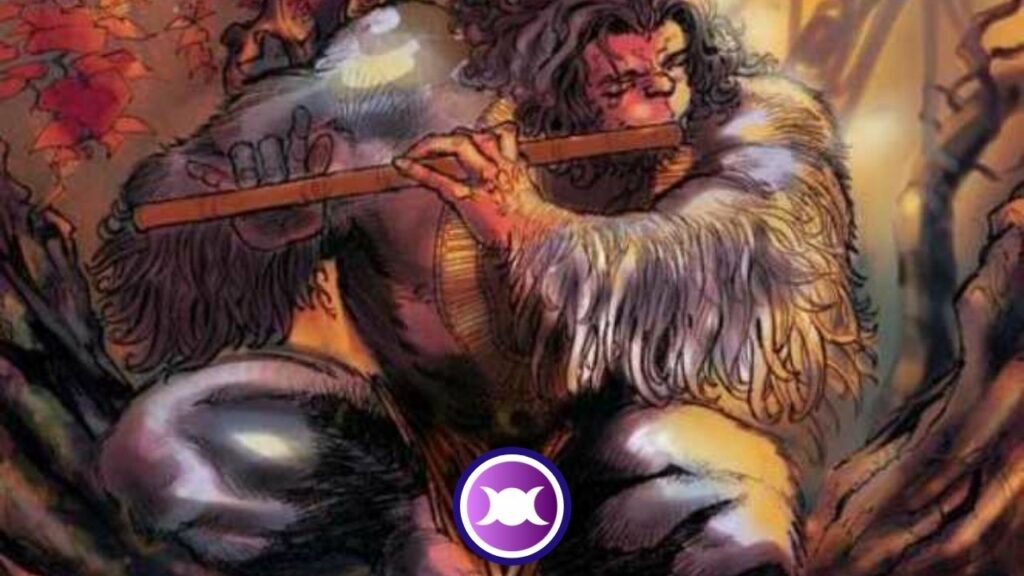
Hanuman plays a very important role in the Ramayana, helping Rama.
He is extremely popular in India today and highly venerated. His worshipers ask for protection mainly.
Below you can find a mantra for Hanuman, so he can grant you the power to face your problems.
Kartikeya – THe God of War
Kartikeya is the God of War and he is the son of Shiva and Parvati. He is the oldest one and his young brother is Ganesha, the God of Wisdom.
Kartikeya is also known as Skanda.
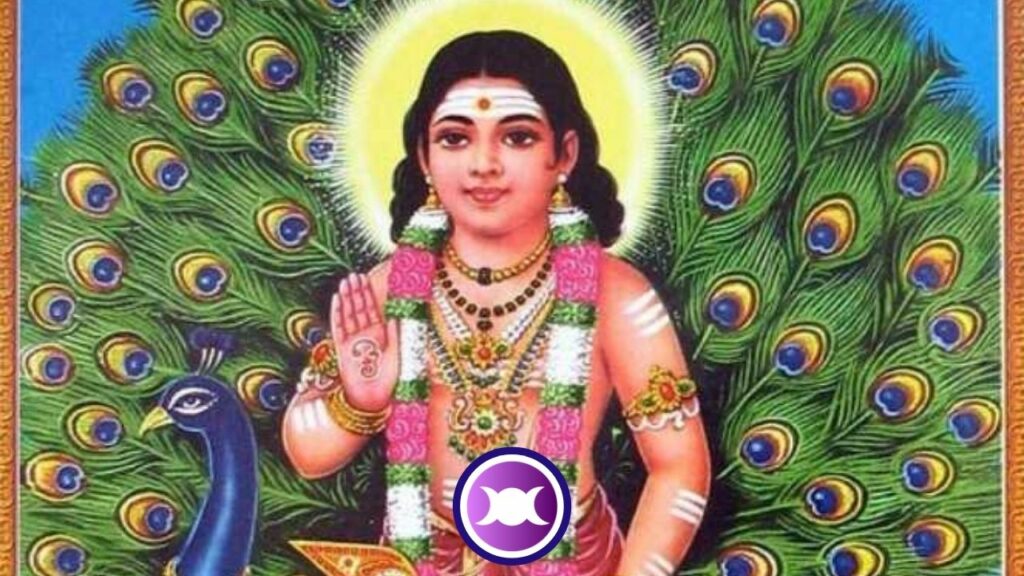
While Kartikeya represents stamina, the physical energy to fight, and strength, Ganesha represents the power of the mind and intellect.
Below you can find a mantra for Kartikeya to help you achieve your goals:
Ganesha – The Obstacle Remover
Ganesha is also the son of Shiva and Parvati, the younger brother of Kartikeya. He is the God of Wisdom, popularly known as the Obstacle Remover.
He was adopted by Lakshmi, the Goddess of beauty and fortune.
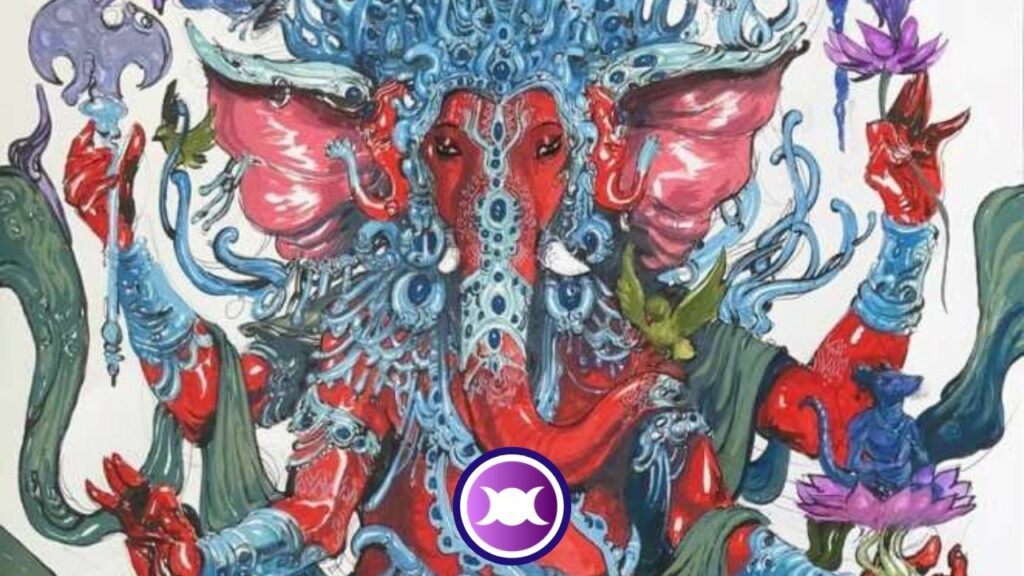
It is said that Parvati was feeling alone while Shiva was meditating in the mountains for long years. In one of these moments, she decided to make a son with her own hand and imbued him with life. Ganesha was born.
While Parvati was bathing herself, she ordered Ganesha to protect the gates of their palace.
Shiva then returned from his meditation and found the young Ganesha by the door. Unaware of his identity, Shiva decapitated the young one who was blocking his entrance.
Parvati became furious when she discovered what happened and ordered Shiva to replace the boy’s head and bring Ganesha back to life.
Shiva searched for a living being to replace Ganesha’s head and the first one he found was an elephant.
This is the reason why Ganesha is an elephant-headed God. And elephants in general (not only the head) are symbols of Ganesha.
Posteriorly, Ganesha was adopted by Lakshmi, the wife of Vishnu.
She decided to become a mother and asked Parvati for one of her sons.
Lakshmi represents material riches and Ganesha represents the wisdom to deal with riches.
One complements the other.
Below you can listen to a mantra for Ganesha to remove the obstacles of your life and also provide wisdom:
The Main Hindu Goddesses
The Hindu Goddesses are known as Devi and they all are manifestations of the primordial feminine energy, Shakti.
Each Devi brings specific archetypes, powers, and skills.
In some situations, it is common to find a Hindu Goddess who is also a manifestation of another Hindu Goddess.
Remember that all the Goddesses you’ll find here are also in my free Goddess Oracle! Flip a card a receive a message from a Goddess!
So, here they are:
Parvati – the Goddess of Love
Parvati is Shiva’s wife and also a manifestation of Shakti.
She is venerated as the Hindu Goddess of Love and all the issues related to love, marriage, and relationships are addressed to her.
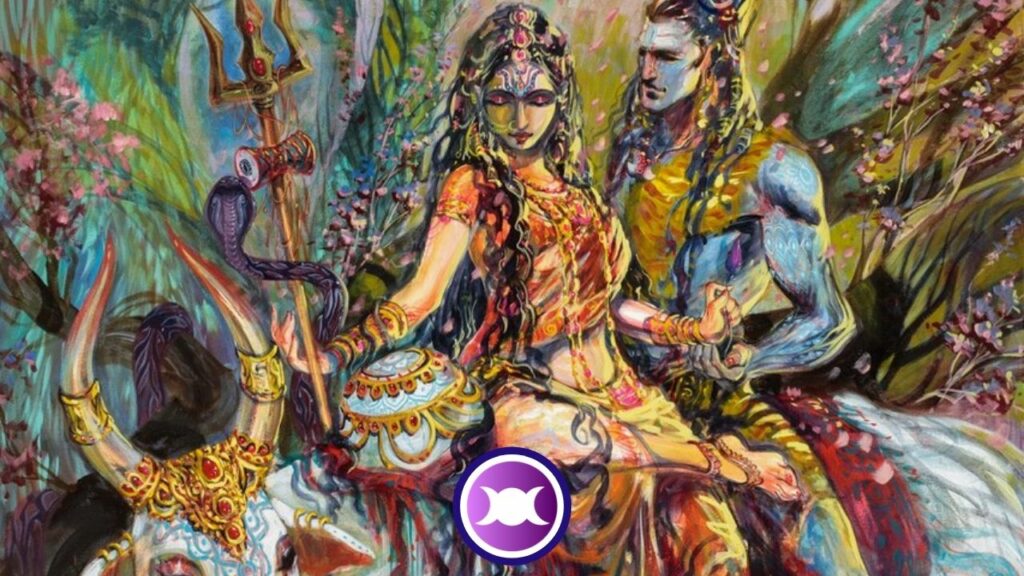
This Goddess is extremely powerful and some consider her a balanced aspect of other more violent and extreme Devi, such as Durga and Kali.
She is the mother of Kartikeya, the God of War, and Ganesha, the God of Wisdom.
Parvati’s mantra aids in loving issues and also helps to get married – or get rid of a bad one!
Below you can read an article about Parvati’s story, archetype, and more:
Saraswati – The Goddess of Arts
Saraswati, also spelled as Sarasvati, is the Goddess of Arts, Intelligence, and Communication.
She is the personification of the River Saraswati and she was one of the first creations of Brahma and also his wife.
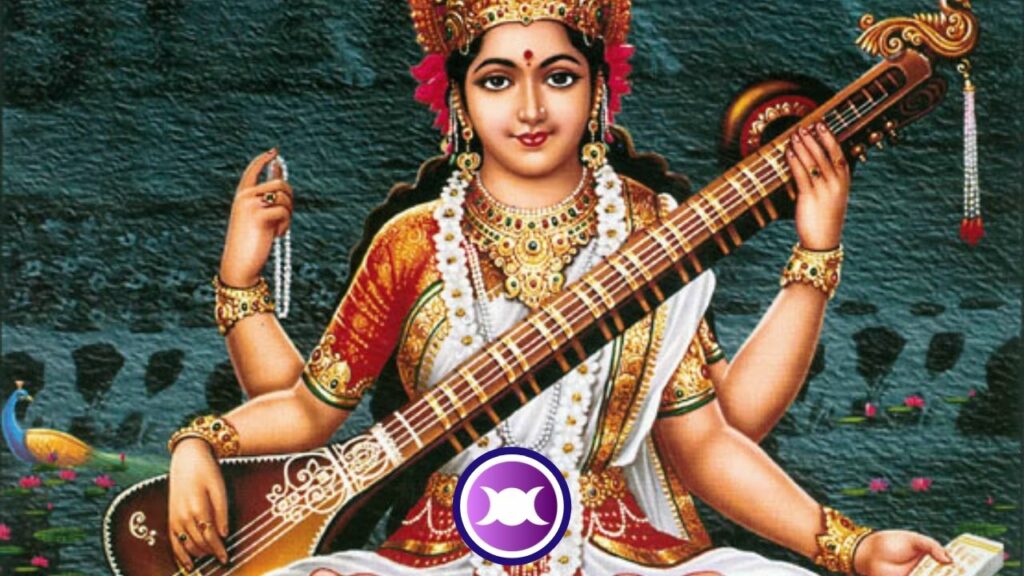
Although she doesn’t have many stories about herself, she is always mentioned and revered for her greatness, power of protection, and also as a source of inspiration.
Saraswati’s mantra aids in concentration, inspiration, creativity, and during your studies:
Below you can read an article about Saraswati’s story, archetype, and a passage of hers in the Puranas:
Lakshmi – The Goddess of Fortune
Lakshmi is the Goddess of Fortune, Beauty, and Riches.
She’s highly venerated, mainly by merchants.
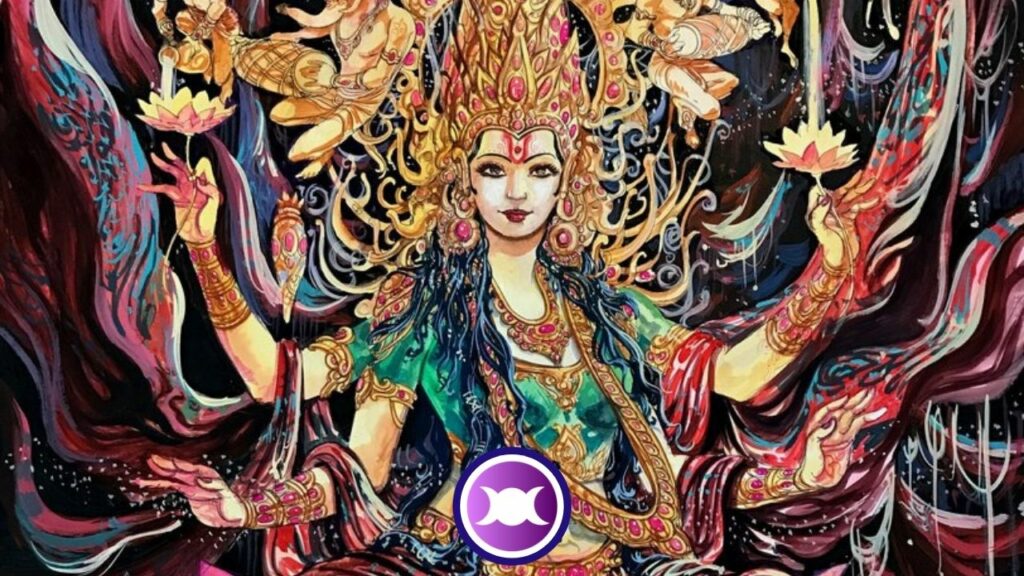
Lakshmi is usually depicted on a red lotus flower and she usually has 4 arms.
From two of her hands, it’s common to see a river of golden coins flowing. Each of the other two hands may hold a lotus flower.
She is the adoptive mother of Ganesha. She represents material riches and Ganesha is the wisdom to deal with everything in a wise way.
Lakshmi’s mantra helps you to get ready to accept the abundance of the universe and also to attract more beauty to your life:
Below you can read an article on Lakshmi’s archetype, her story, symbols and a passage of her and Vishnu in the Puranas:
Maya – The Goddess of Illusion
Although we may find Maya (MaYA) depicted as a Goddess in some places, she’s actually the manifestation of powerful female energy, not always perceived as having a body.
Remember I told you Brahma created all the material world and everything we can interact with? So, there’s also “another world”, the world of illusions and dreams, the unreal world. Maya created this one.
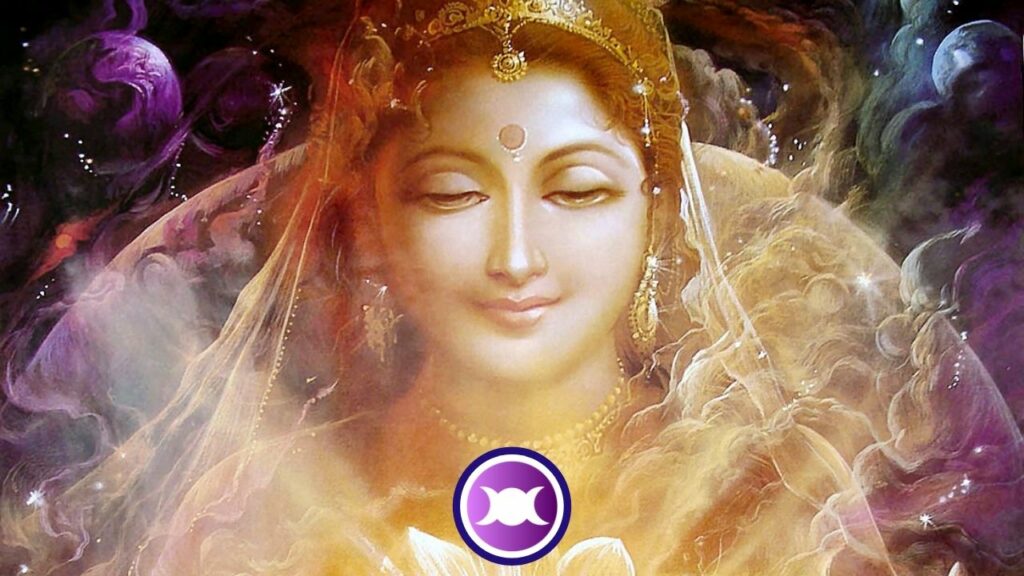
It is a bit complex to understand her, but it’s not impossible.
From the moment we acknowledge Maya and we go through her, we can finally find the truth of everything.
There’s no mantra dedicated to her.
To (try to) understand more about her, you can read my article using the button below:
There’s also an important piece of information about Maya. Buddha’s mother is Maya. In this case, she’s known as Mahamaya (Great Maya).
Gayatri – The personification of Gayatri Mantra
Gayatri is the Hindu Goddess that embodies the Gayatri Mantra.
She is usually depicted as a five-headed woman facing different directions.
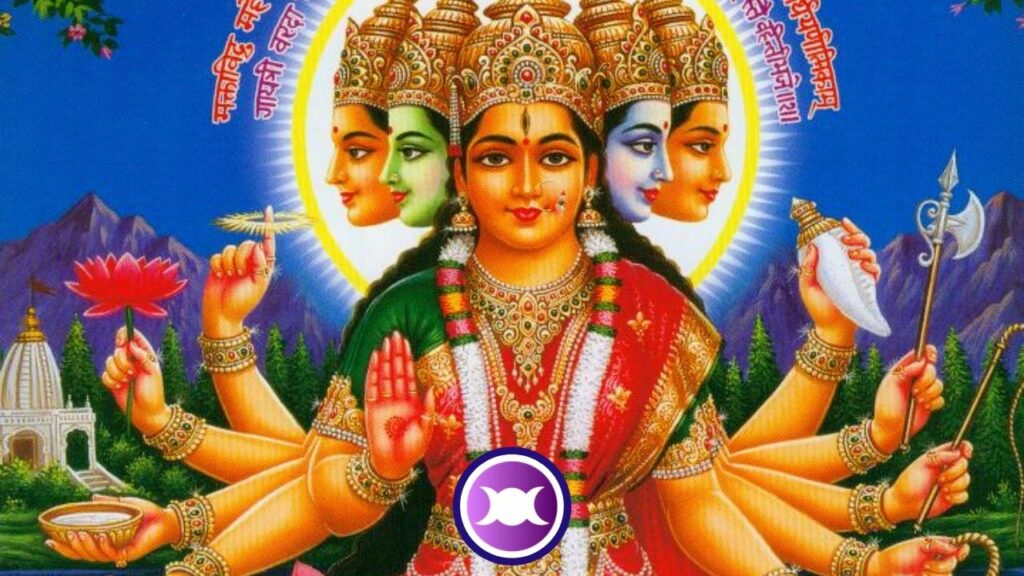
It’s is said that the Gayatri mantra is the most powerful mantra of all.
There’s also a relation between Gayatri and Saraswati and some consider one the manifestation of the other. In some cases, Gayatri is the wife of Brahma.
Listen to Gayatri Mantra below and expand your universe:
Using the button below you can read an article with more details about Gayatri:
Durga – The Warrior Goddess
Durga is the most powerful Hindu Goddess of all.
Her name means “the unreachable”, “the invincible” or something alike.
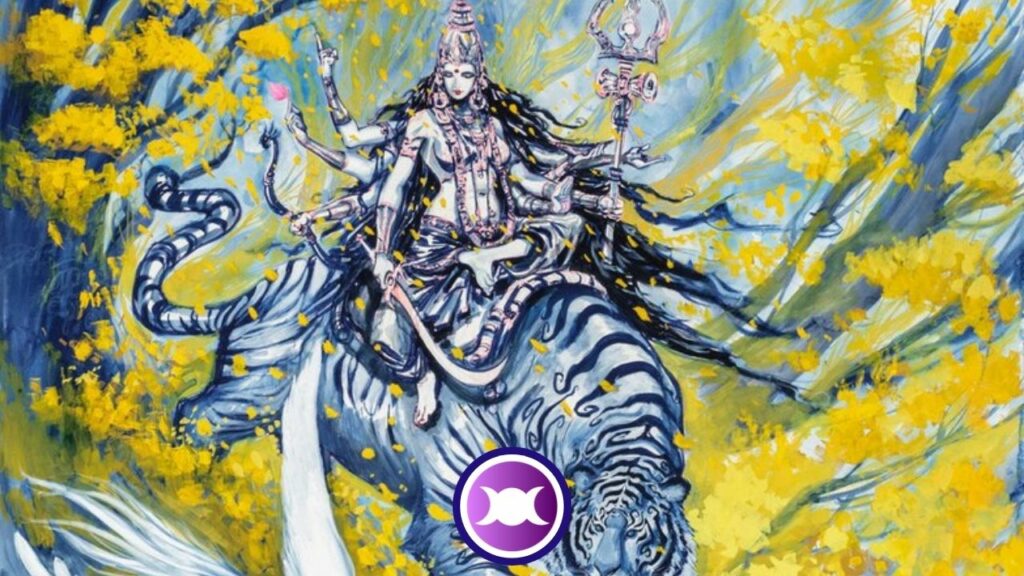
No one can defeat Durga.
She is usually represented as an 8-armed woman and each of her hands holds a divine weapon from another Deva – yes, all her weapons were given to her by the Hindu Gods!
But why?
Because all of them couldn’t defeat Mahishasura, the buffalo demon.
None of the Hindu Gods were able to defeat him. Even. then they fought together, they were not able to achieve victory.
That’s when Durga, the energy of Shakti and/or a manifestation of Parvati, emerged.
She was given all the weapons and also the task of defeating Mahishasura.
Of course, she won the battle. And it was easy for her.
Durga is venerated as a Great Mother Goddess and she is also known as Ma Durga.
Curiously, she’s the only Hindu Goddess who doesn’t have a husband.
She said that only those who are able to defeat her in battle would have to honor to marry her.
Durga’s mantra brings protection and also enhances your inner strength:
Below you can read an article on Durga’s story, archetype, and much more:
Kali – The Goddess of Destruction
The last one on my list, but not the least important, is the Hindu Goddess of Destruction: Kali.
But why is Kali the last one here?
Because of 2 reasons:
- 1) She is extremely popular today, even outside Hinduism;
- 2) She is totally misinterpreted by many people.
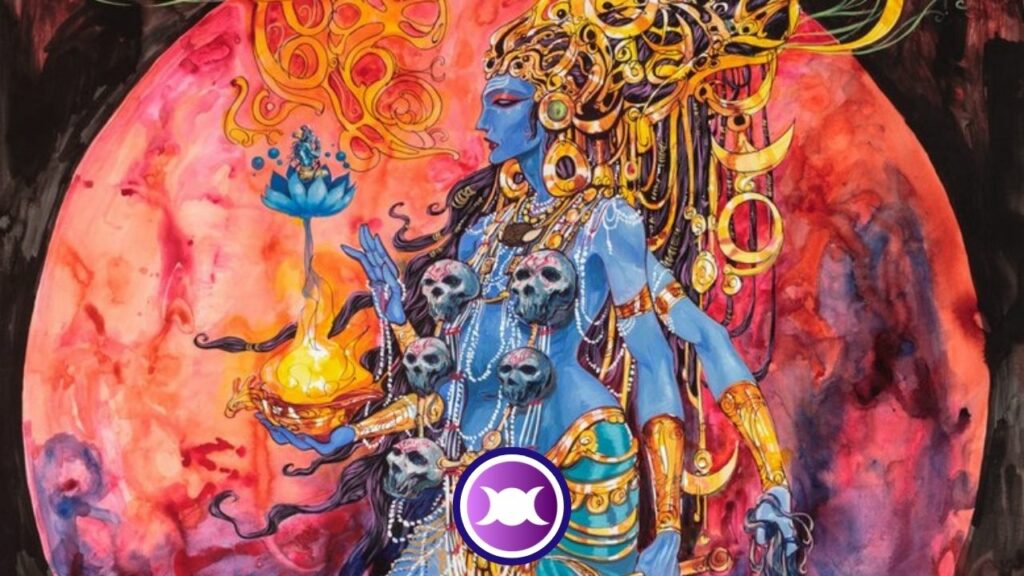
Kali is known as the Great Devouring Mother. She is the Goddess of Destruction, but also the Goddess of Rebirth and Time itself.
Her name means “time”.
Nothing can stand the flow of time. Time creates and destroys everything.
Her role is similar to Shiva’s.
Kali is the uncontrollable aspect of Durga. So, we know Durga is the most powerful of all Hindu Goddesses. Then Kali, her uncontrollable aspect, is even more.
There was a battle that Durga couldn’t win. Not because she was weaker than the enemy, but because the enemy could multiply himself for every blood Durga took out of him.
Raktabija, this asura, generated many copies and Durga continue to attack him, generating more and more copies.
During a specific moment, from Durga’s forehead, a new energy emanated. It was Kali, the Devourer.
Kali drank all the blood from the battle, preventing the multiplication of Raktabija and leading to victory.
And why is Kali misinterpreted today?
Mainly because of her appearance. Today we live in a society that forces us to believe in something that is totally good or totally evil. Duality is not found in one being for most people.
So, it makes it hard for most people to accept that a single being can express this duality of being good and evil, calm and angry, nurturing and destructive at the same time.
Kali’s mantra can help you to destroy what’s evil around and inside you!
Below you can read an article on Kali’s story, archetype, and much more:
Hindu Gods and Goddesses Statues
Another thing that makes the Hindu Gods and the Hindu Goddesses different from Deities from other pantheons is the number of statues available. Of course, we can easily find Greek Gods and Goddesses statues, even in ancient times, for example. But the quantity of statues from Hindu Deities is astonishing!
It doesn’t really matter where you live, you can probably find statues, figurines, and sculptures of the Indian Gods.
Below you can see some of mine. And if you want to purchase some, you’ll find options after the pictures.
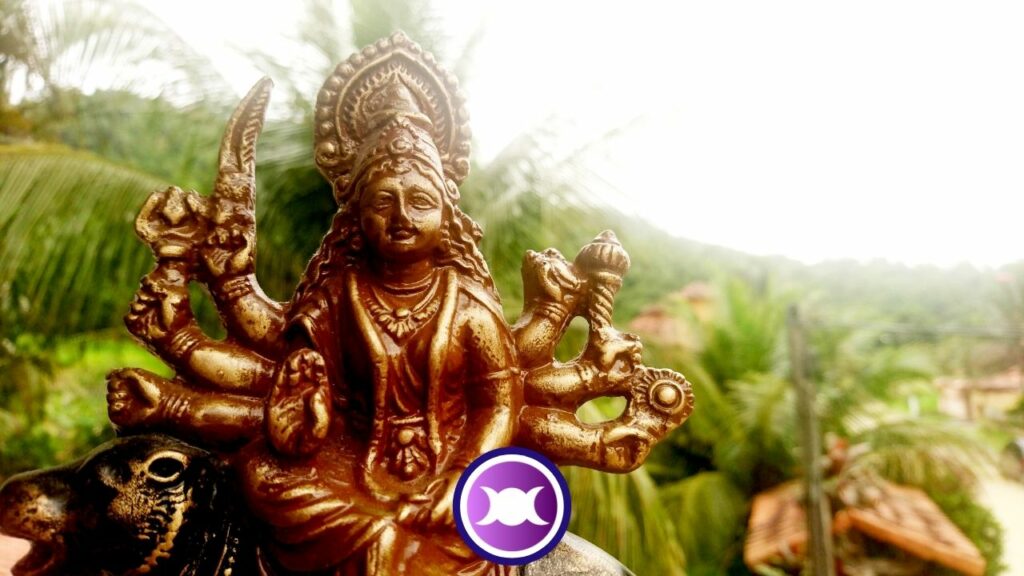
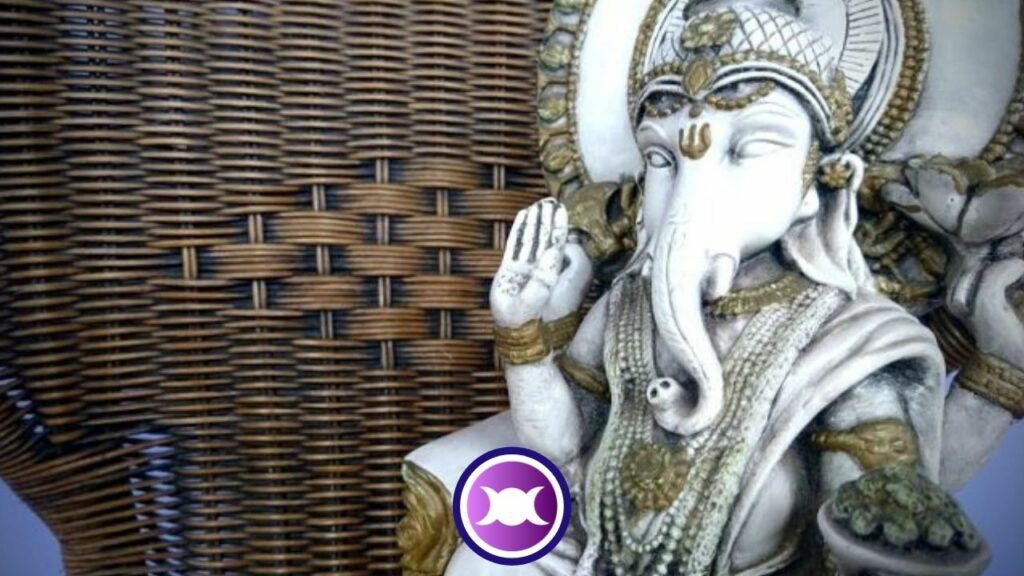
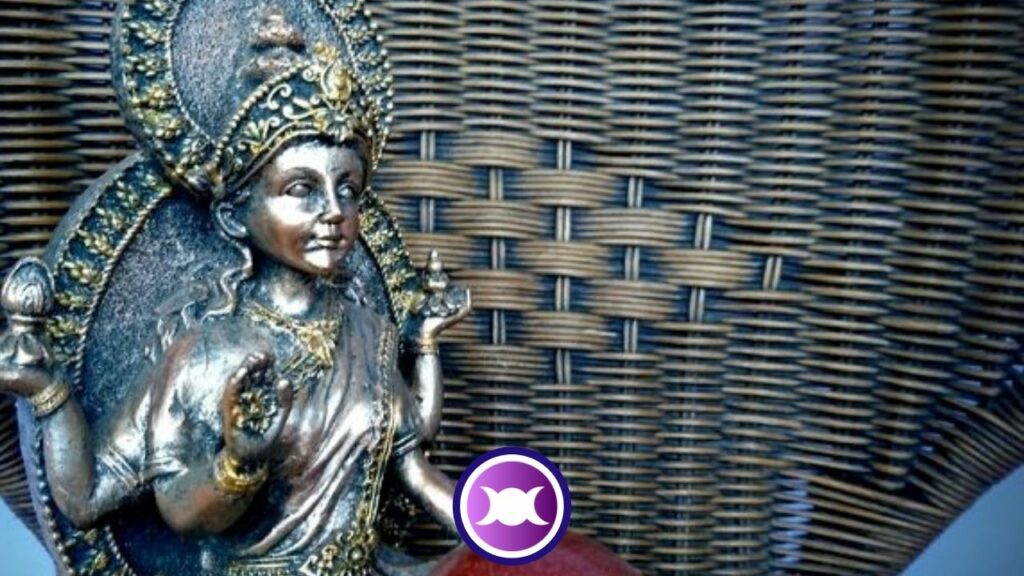
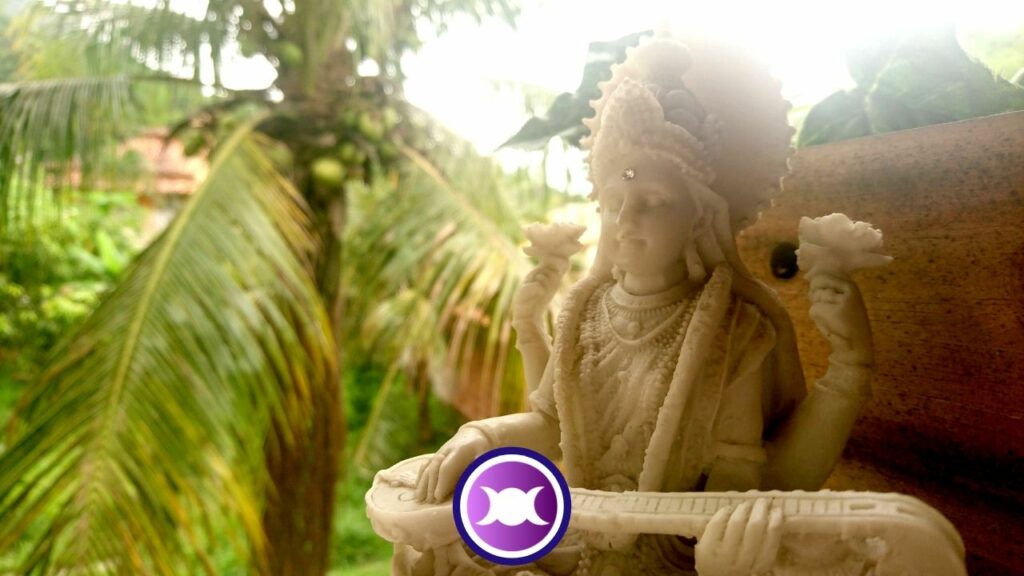
Conclusion
Even though there are thousands of Hindu Deities, we can have a clear idea of the main Hindu Gods and Hindu Goddesses.
Hindu religion as well as its customs are also very complex.
The goal of this page was to present in a clear and objective way the main Hindu Gods and Goddesses and how we, outside of Hinduism, can understand them and even work with their mantras and archetypes in a broaden spiritual and pagan practice.
Which one is your favorite Hindu God? What about your favorite Hindu Goddess?
Leave a comment below if you wish and also share your story with them here.
Thank you.
